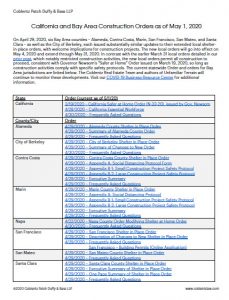By Miles Imwalle, Katharine Van Dusen, Charmaine Yu, and Sarah Peterson.
Senate Bill 35 (SB 35) was one of the most promising bills to come out of a package of housing-related laws enacted by the California legislature in 2017. SB 35 authorized a potentially powerful procedure for reviewing proposed housing developments, requiring cities to deliver streamlined approvals of developments that are consistent with local zoning and design standards, and eliminating the arduous discretionary approval process that has long-stymied such developments in California. But until recently, SB 35 was untested in court. Now, two recent trial court decisions have affirmed that SB 35 is indeed a powerful tool: not only must projects be approved within three to six months, but the approvals are likely to withstand later legal challenges.
The more recent decision involved a challenge to the first large-scale project approved through SB 35. In 2018, the City of Cupertino approved a major redevelopment of the Vallco Fashion Mall under SB 35. The Vallco project proposed to add 2,402 units of housing to Cupertino, including 1,201 affordable units. The City reviewed the project and determined it was consistent with local standards, and the project was therefore approved under SB 35. In fact, because the project satisfied the local standards and otherwise met SB 35 requirements, the City had no discretion to reject the project application.
In a closely watched and hotly contested proceeding, a group of Cupertino residents known as Friends of Better Cupertino petitioned to overturn the approval. The lawsuit took over a year to resolve—more than triple the amount of time it took for Cupertino to approve the project in the first instance. The lawsuit challenged nearly every aspect of the approval, from Cupertino’s method of reviewing the application to its determinations that the project met the statutory criteria.
On May 6, 2020, the Court rejected each of petitioner’s arguments in a detailed, carefully reasoned 62-page decision (available here). Crucially for project applicants, the Court at the outset rejected the foundational premise of petitioner’s lawsuit, namely, that Cupertino had a legal obligation to deny the project application if it failed to meet the statutory criteria for approval. The Court held that municipalities are under no ministerial duty to reject any project submitted under SB 35: “nothing in [SB 35] requires an agency to enforce the eligibility criteria or its own local standards by affirmatively rejecting a noncompliant project.” Because there is no such duty, project opponents cannot tie up approved projects in years of litigation.
The Court’s decision also made clear that a city’s staff is fully authorized to review and approve an SB 35 project without involvement from the city council or the planning commission, and without any public hearing. While SB 35 authorizes limited public oversight, as long as the oversight does not chill or inhibit project approval, SB 35 “neither mandates a public hearing nor requires a decision to be made by a local planning commission.” Instead, SB 35 was enacted to “eliminate the involvement of elected officials in the process to make review ministerial rather than discretionary.” In rejecting petitioner’s argument that a public hearing was required, the Court recognized a key goal of SB 35: “to drastically reduce the politicization of the planning process and the use of tactics like those Petitioners resort to here.” The staff-level review and approval of Vallco’s SB 35 project was appropriate and fully consistent with the goals of SB 35.
While the Court denied Friends of Better Cupertino’s petition as procedurally defective because Cupertino would have had no duty to deny a non-compliant project, the Court also took pains to emphasize that the City’s approval of the project was, in any case, appropriate as a factual matter. The Vallco project actually satisfies each of the objective standards in SB 35, and the City was correct to approve it. As the Department of Housing and Community Development—the statewide agency in charge of implementing SB 35—has recognized, “[a]pproval of projects such as the Vallco project fulfill this legislative intent.”
The Vallco decision follows on another decision that gave proper effect to the SB 35 statute. That decision involved the denial by the City of Los Altos of a 15-unit project submitted under SB 35. In the decision, issued on April 27, 2020 (available here), the Court ruled that the City improperly denied the application because it had not adequately identified inconsistencies with specific objective standards. While the City had issued a denial letter claiming that the project included too few parking spaces and did not have “adequate” access, the Court faulted the letter for being vague and failing to identify any objective standards that the project violated. Because the City failed to issue a valid inconsistency determination within the statutory deadline, the Court held that the project “was deemed to comply with objective standards as a matter of law,” and directed the City to approve the project.
These two decisions fulfill SB 35’s promise as a powerful tool to obtain approvals of housing developments throughout the Bay Area and the State. The SB 35 procedure effectively limits the ability of local residents and politicians to block qualified housing developments from being approved in the first instance, and also limits their ability to use the courts to tie up projects that comply with SB 35’s criteria.
Coblentz Patch Duffy & Bass LLP attorneys assisted the applicant, Vallco Property Owner LLC, and its affiliate, Sand Hill Property Company, during all stages of entitlements and in the Friends of Better Cupertino litigation.
